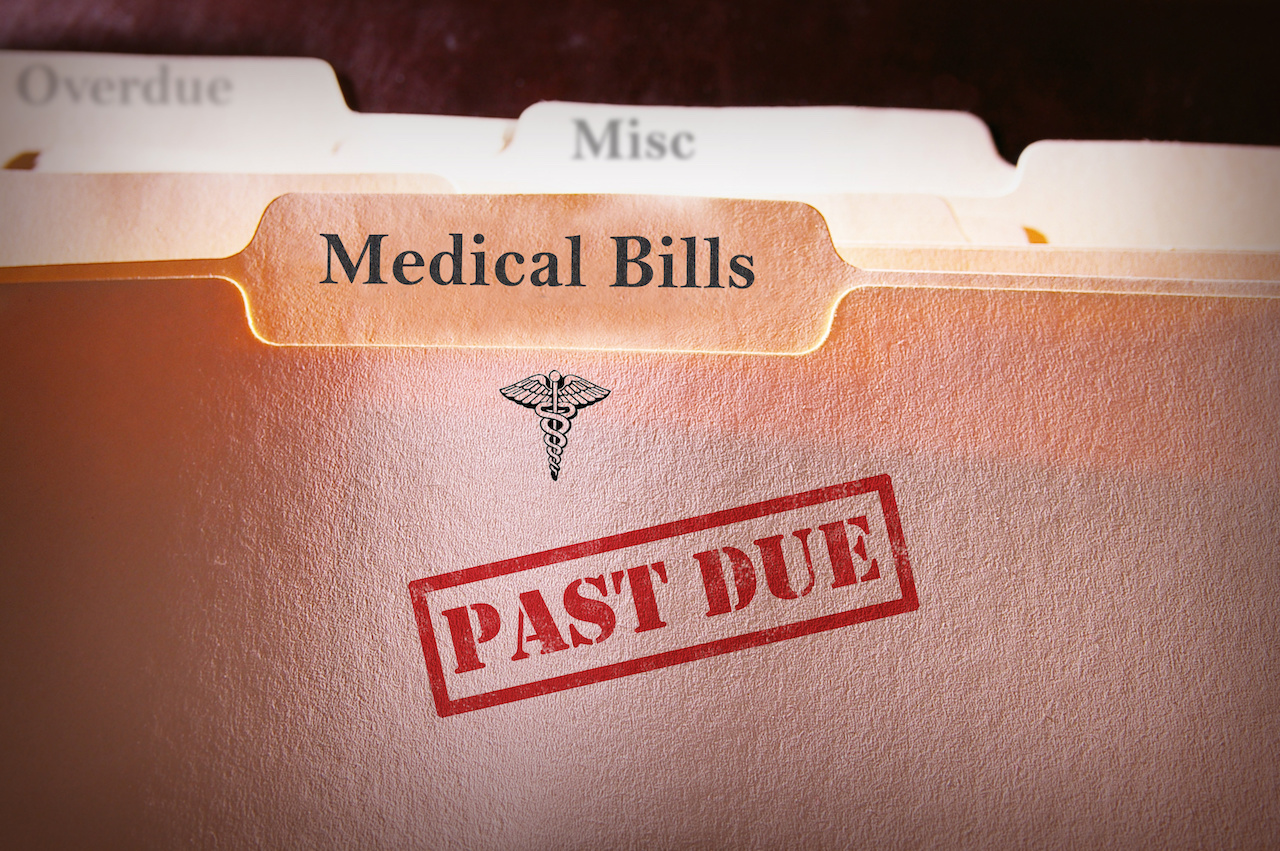Credit Sesame discusses medical debt and how states help reduce this debt.
Health care is the largest source of debt in collections in the United States, and most states aren’t doing much to help residents. According to Innovation for Justice, a team of researchers at the University of Arizona and the University of Utah, only three states do enough to prevent residents from drowning in medical debt. Maryland, California and Maine received good rankings using the researchers’ medical debt policy scorecard. The other 47 states had weak or poor scores. See state ranking for helping with medical debt, below.
Medical debt is the most common type of debt that ends up in collections as reported on consumer credit records, according to a report by the Consumer Financial Protection Bureau. In 2021, 58% of debt recorded in collections were for a medical bill, the CFPB says.
How big is medical debt?
Almost 56% of Americans have some type of medical debt, with 1 in 4 adults owing more than $10,000, even if they have health insurance, according to a survey by an affordable health insurance group in 2022 that isn’t affiliated with Innovation for Justice.
The Kaiser Family Foundation estimates that 100 million Americans are behind on paying their medical or dental expenses, and 25% or more than $5,000.
Medical debt affects consumers financially in many ways. The survey found that 46% of Americans with medical debt delay buying homes, and 14% plan to declare bankruptcy in 2022.
Health care debt also prevents Americans from saving for retirement, investing in their children’s education, or borrowing money for college, according to a nationwide poll by the Kaiser Family Foundation. Almost half of poll respondents used up all or most of their savings because of health care debt, and 63% cut spending on food and other basics. About 1 in 7 people with debt said they’ve been denied access to a hospital, doctor, or other provider because of unpaid medical bills.
States ranked for helping consumers with medical debt
The Innovation for Justice team ranked all fifty states based on medical debt consumer protection policies. Protections include such things as legislative measures to restrict the healthcare industry’s billing and collection practices to how debt claims are handled in the courts. In particular, methodology and scoring criteria included state policy on:
- Reducing how often people incur medical debt.
- Increasing the ability of patients to resolve debt out of court.
- Improving the openness, efficiency, and equity for people navigating medical debt court cases without a lawyer.
- Reducing the negative consequences for debtors after court.
- State-level expansion of Medicaid eligibility.
State rankings from highest (most helpful) to lowest (least helpful) below:
Good
1. Maryland
2. California
3. Maine
Weak
4. New York
5. Colorado
6. Washington
7. Michigan
8. Massachusetts
9. Minnesota
10. Louisiana
11. Ohio
12. Indiana
13. Missouri
14. Montana
15. Oregon
16. Connecticut
17. Kansas
18. Idaho
19. Alaska
20. Pennsylvania
21. Oklahoma
22. Florida
23. North Dakota
24. Vermont
25. Wisconsin
26. Georgia
27. Kentucky
28. North Carolina
29. Alabama
30. Illinois
Poor
31. Nevada
32. Arizona
33. Virginia
34. Iowa
35. New Hampshire
36. Utah
37. Nebraska
38. New Mexico
39. Mississippi
40. Delaware
41. Arkansas
43. Hawaii
44. South Dakota
44. Wyoming
45. New Jersey
46. Rhode Island
46. West Virginia
48. Texas
49. South Carolina
50. Tennessee
Why Maryland is tops
Maryland had the highest score because it helps reduce medical debt in many ways. These include:
- State lawmakers mandating that patients be screened for health insurance or government health benefits.
- Hospital billing practices are regulated, and hospitals must offer a payment plan before sending a patient’s bill to collections.
- Hospital bills must itemize every charge and payment, and if charity care has been provided.
- Medicaid has been expanded in the state, offering subsidized or free health insurance to more low-income workers.
How states can help
Medical debt comprises the majority of debt collection lawsuits, Innovation for Justice found. And the majority of those lawsuits end in default judgments against people with medical debt.
Better solutions are available upstream, long before medical debt becomes a problem. These include policies to increase access to health insurance, financial assistance policies, and Medicaid.
Prevention is the ultimate goal, but more is needed to help patients who have incurred medical debt, and to keep the debt out of court, the group says. Such policies include preventing bills ending up in collections, not reporting medical debt to credit bureaus, and requiring providers to notify patients how to resolve billing disputes.
For cases that proceed to court, states should be aware that most patients represent themselves in court. A shorter timeframe for how long medical debt can be litigated might help, the group says, as could limiting post-judgment collection such as wage garnishment and home foreclosure.
You may also be interested in:
Disclaimer: The article and information provided here is for informational purposes only and is not intended as a substitute for professional advice.




















